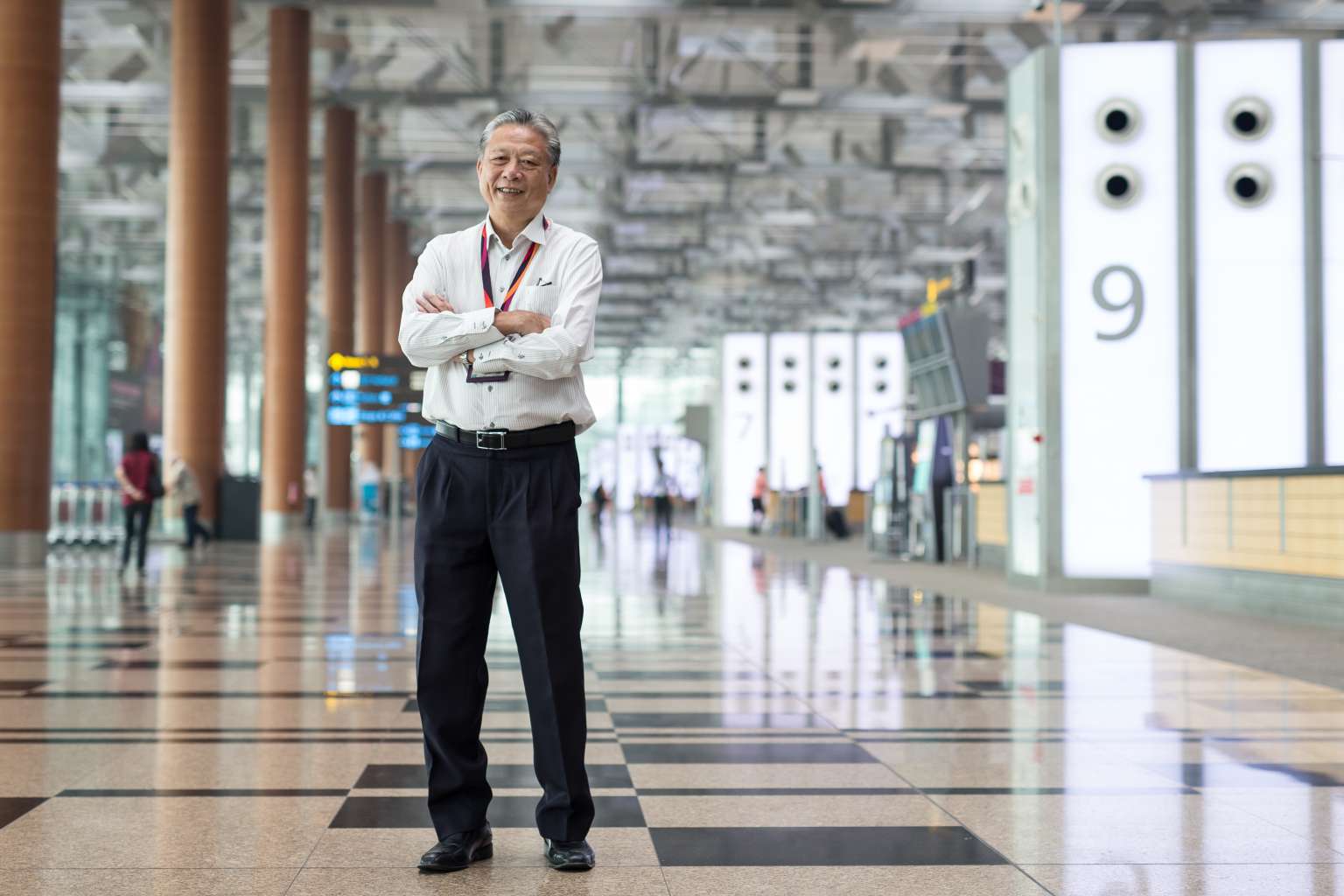In the 60s, flying was a luxury few could afford
I remember... When the airport was in Paya Lebar
Sign up now: Get ST's newsletters delivered to your inbox

Mr Foo See San, who works in airport operations, photographed in Changi Airport's Terminal 3. He joined the former Department of Civil Aviation in 1969, in the hope that he would have a chance to fly abroad for training. He took his first flight only when he was 36, on a work trip to Tokyo, after working at the airport for 16 years.
PHOTO: LIM YONG TECK FOR THE SUNDAY TIMES
Follow topic:
Half a century ago, taking a flight was a luxury that only the rich could afford, said Changi Airport veteran employee Foo See San.
So hoping for a chance to fly abroad for training, Mr Foo, 66, joined the Department of Civil Aviation, which has become today's Civil Aviation Authority of Singapore.
He started work at Paya Lebar Airport in 1969, assisting air traffic controllers with administrative duties.
Mr Foo, the third of six children of a steward on board a cargo ship and a housewife, said: "Only businessmen and rich people could afford to fly in the 1960s. For normal people like me, we had no chance to fly."
In those days, an air ticket to London cost about $2,000, Mr Foo said. His starting pay was only $190 a month. In 1965, a brand new three-room Housing Board flat cost only $6,200. So $2,000 was a princely sum.
In October 1965, it was announced that Paya Lebar Airport, which opened a decade before, would be expanded as air traffic grew.
The airline ticketing offices would be expanded, and a fountain at the roundabout facing the airport terminal would be built to "beautify" the surroundings, among other things.
Sixteen airlines flew into Singapore then, including the British Overseas Airways, Qantas Empire Airways and Cathay Pacific Airways, according to the Singapore Yearbook 1965. The airport served about 700,000 passengers that year.
This is a far cry from the traffic at Changi Airport today. In 1981, Paya Lebar Airport became a military airbase and the airport moved to Changi. Over 100 airlines operate at Changi Airport now and it served 54.1 million passengers last year.
Mr Foo fondly recalls Paya Lebar Airport's distinctive mushroom- shaped information counter and its open-air waving gallery, where people saw the planes taking off or landing.
He took his first flight only when he was 36, on a work trip to Tokyo, after working at the airport for 16 years.
"I was so excited to fly. I saw planes every day but I had no chance to take them," the father of two grown-up sons said.
"Even for my honeymoon, my wife and I stayed at home."
Mr Foo, who is now a senior associate (airport operations planning and airside) with the Changi Airport Group, has been working at the airport for the past 46 years.
He said: "In the past, people dressed formally, like suits, when they flew. It's not like today where people wear anything they want. Now, everyone can afford to fly."
Theresa Tan

